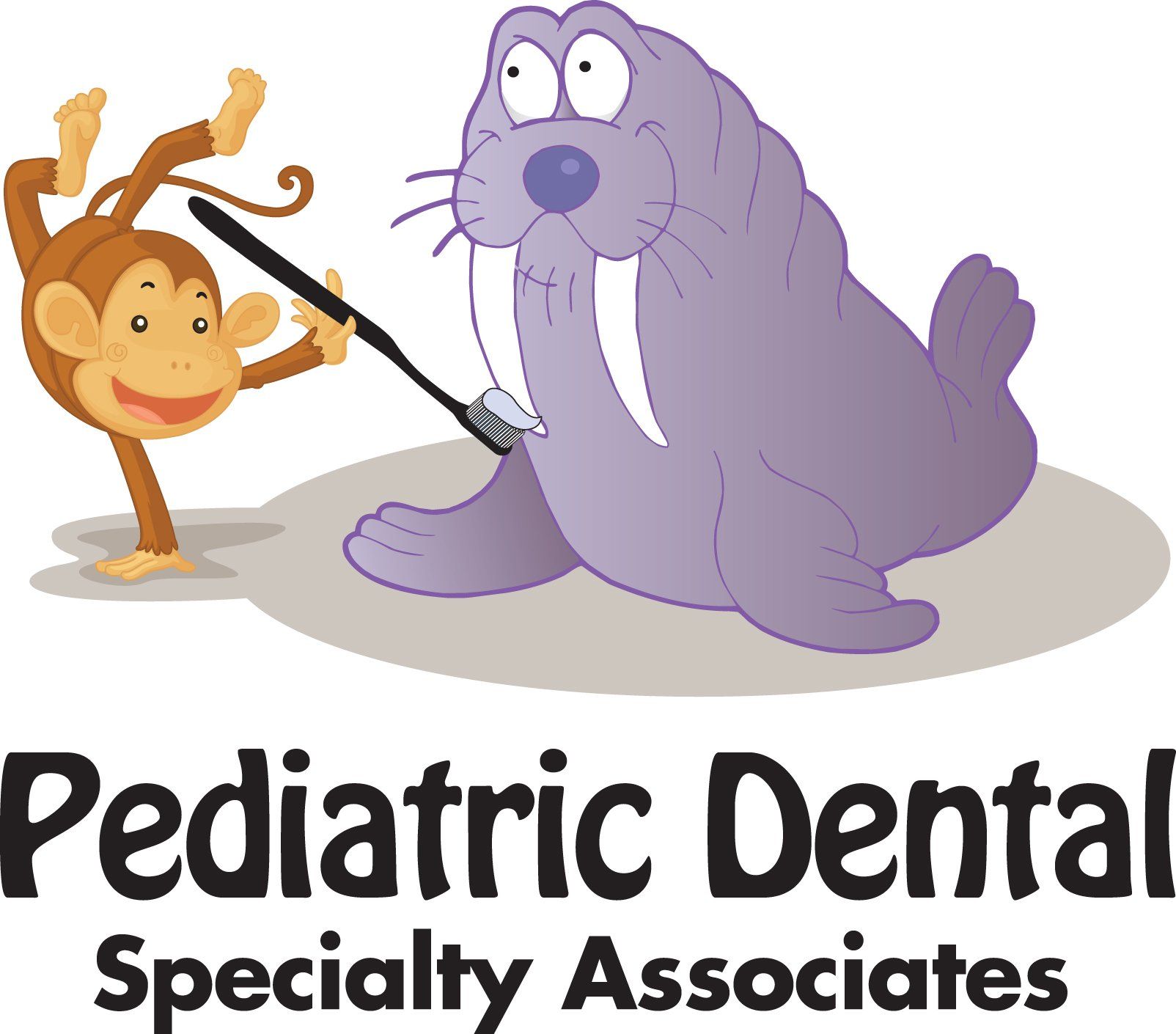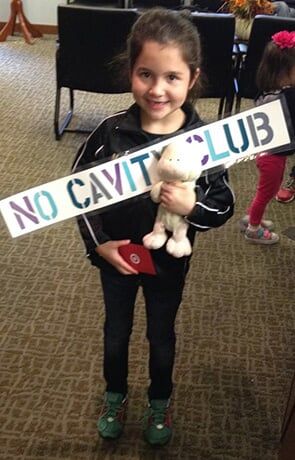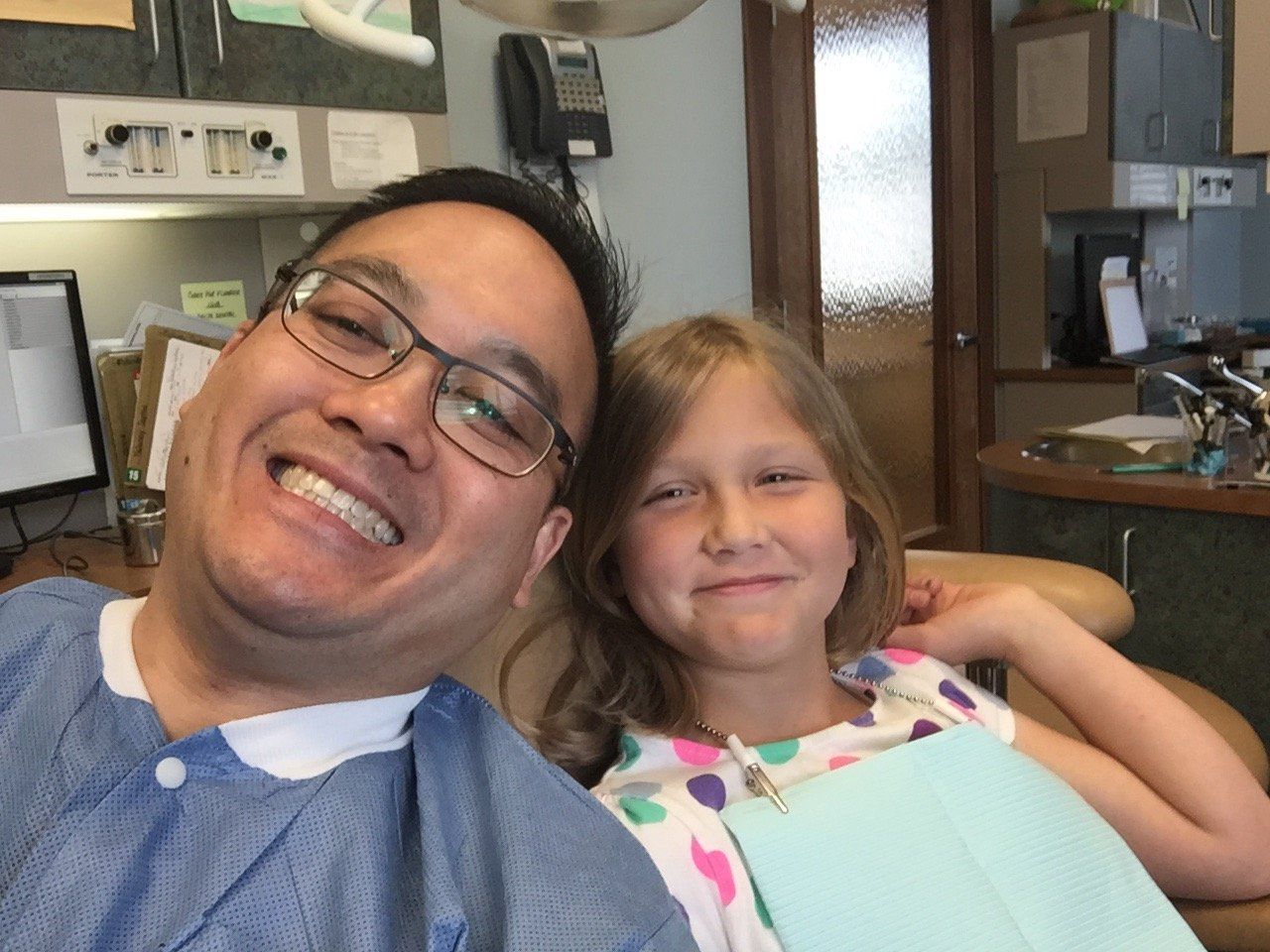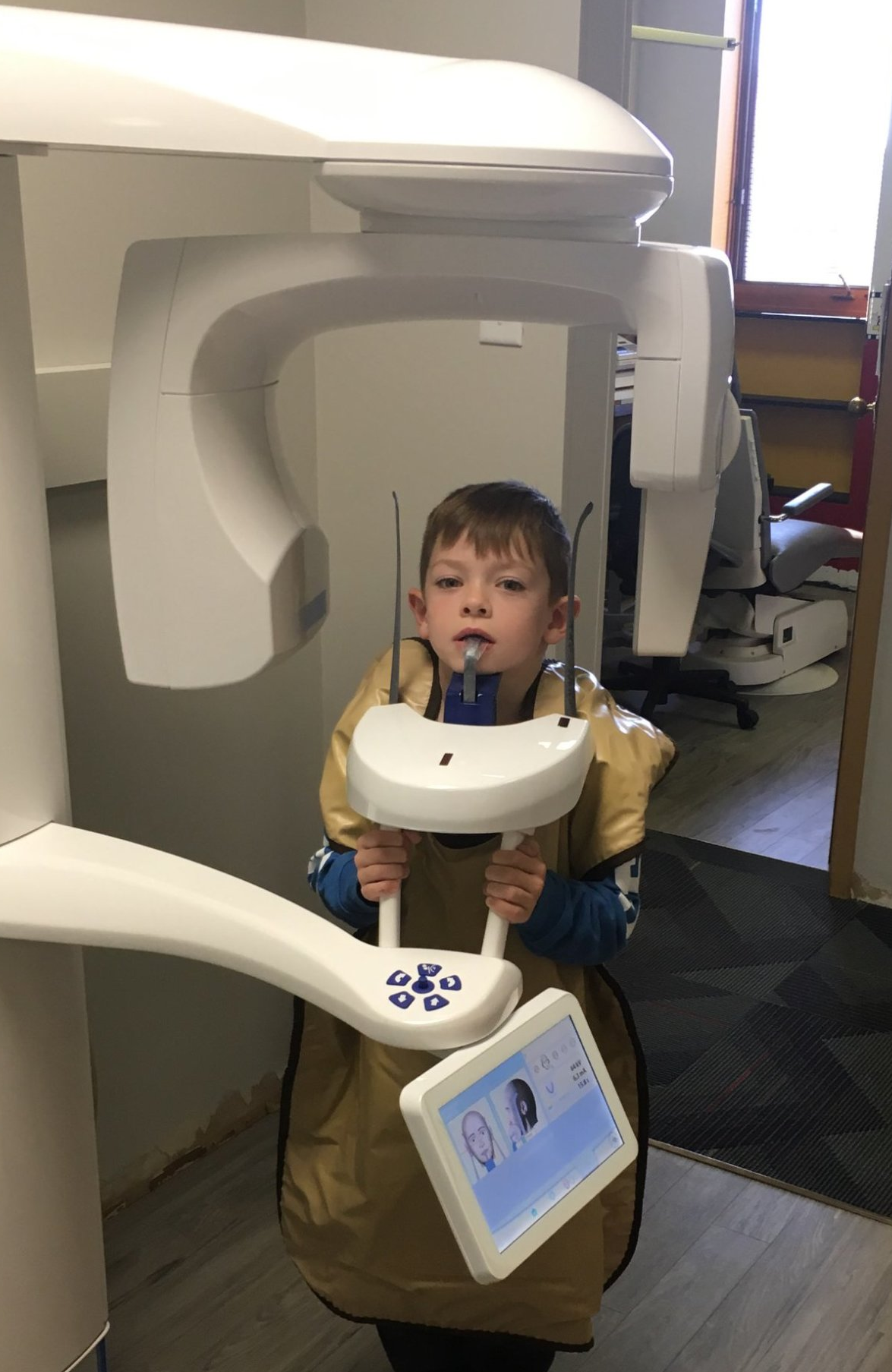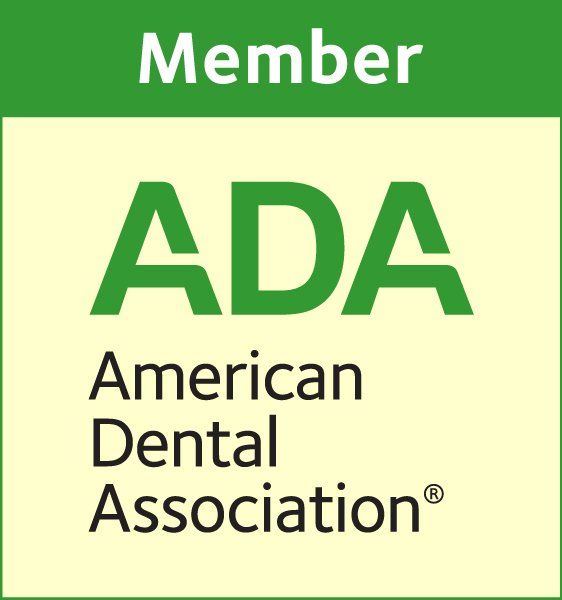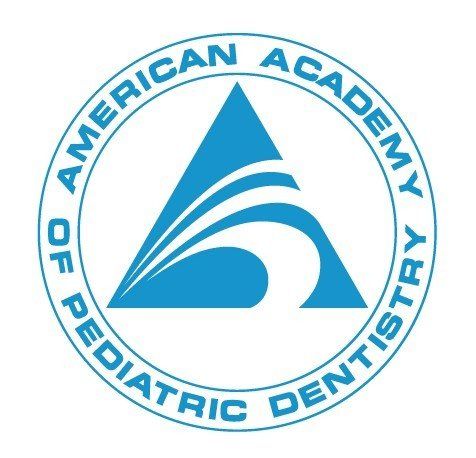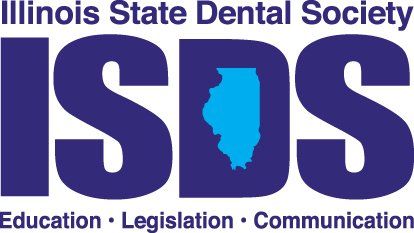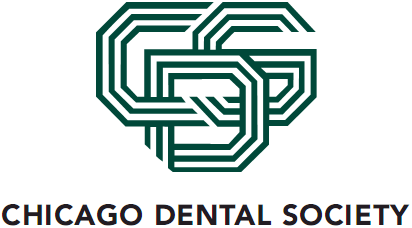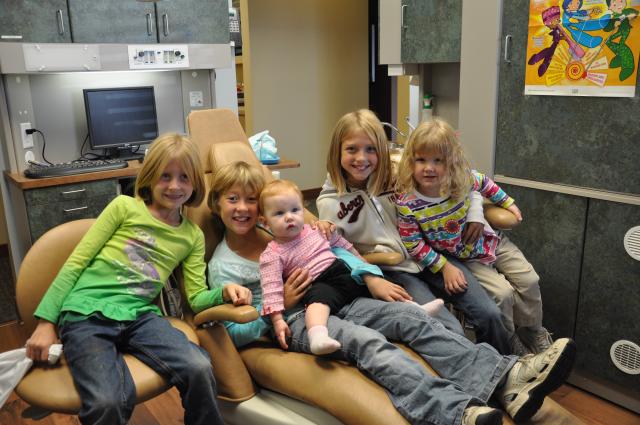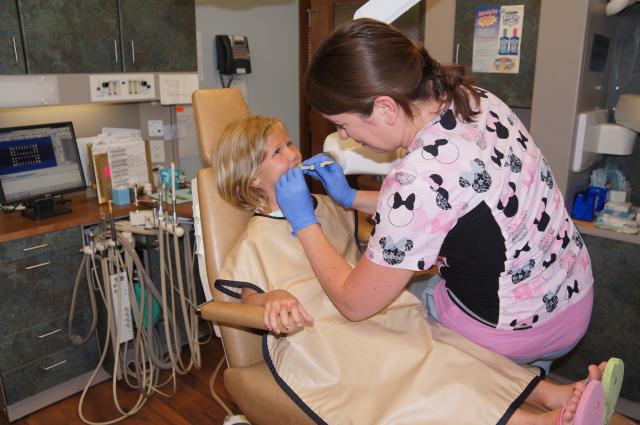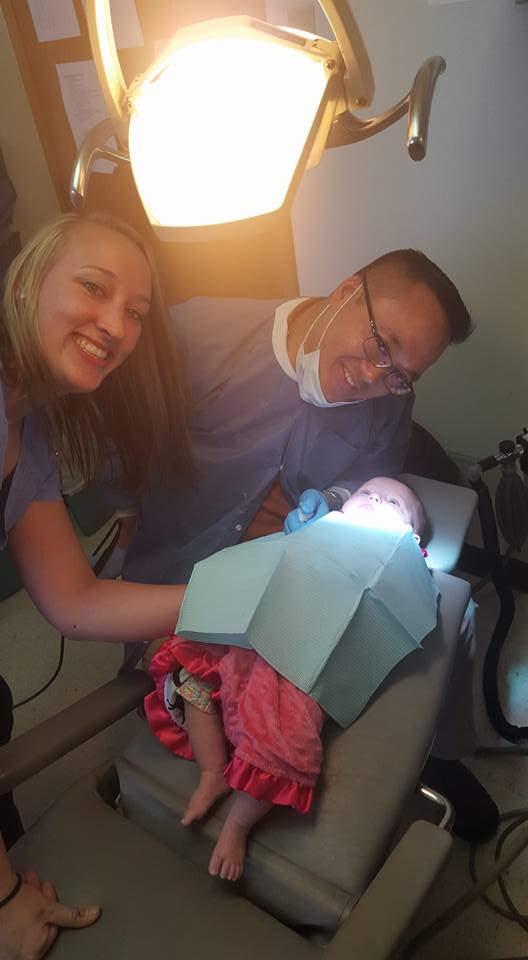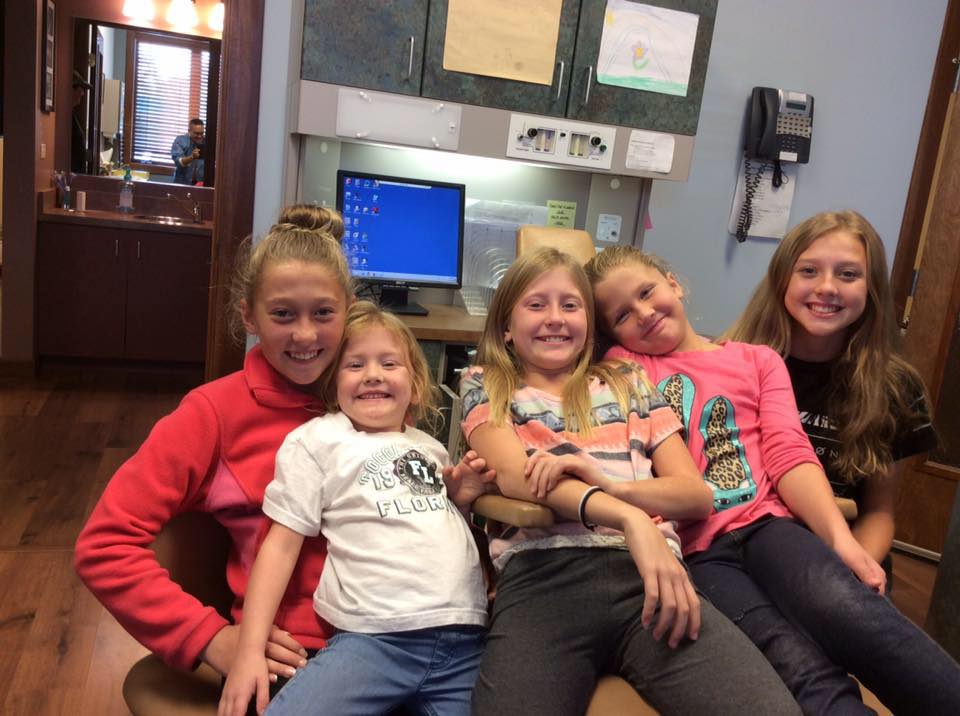Dental Services Provided at Pediatric Dental Specialty Associates
Examination Services
Comprehensive Examination:
The comprehensive examination is a process in which the doctors gather information about your child’s dentition (teeth/bite), growth, and development to provide a thorough diagnosis, prognosis and treatment plan. This examination may include radiographs (dental x-rays).
Growth and Development:
The doctors will evaluate and monitor your child’s dental growth and development at each preventive maintenance appointment. This is critical for proper function as well as aesthetics (appearance).
Caries Exam:
During this examination, the doctors look for areas of decay on both the chewing surfaces and between the teeth. X-rays of the teeth, as well as a visual check, will allow the doctors to pinpoint these areas and determine the best treatment for your child.
Periodontal Examination:
The doctors will examine your child’s gum tissue to insure that gum disease is detected in its early stages. Our hygiene department provides preventive care for your child and home care instructions for parents and patients. Our goal is for your child to maintain proper brushing and flossing habits and have a healthy mouth for a lifetime.
Preventive Services
Prophylaxis (dental cleaning):
These important appointments allow the doctors and their hygienist to monitor your child’s oral health. During the preventative maintenance appointment, the hygienist may clean and polish your child’s teeth. This helps to promote healthy teeth and gums by removing the plaque that causes decay and gum infection. They will also provide oral hygiene recommendations specifically for your child.
Fluoride Treatment:
Fluoride applications help to strengthen the enamel on your child’s teeth, making it more difficult for cavities to begin. Children should receive fluoride treatments every six months.
Sealants:
Sealants protect the chewing surfaces of the back teeth and should be applied as a child’s permanent teeth erupt. We may also recommend sealants for a child’s primary teeth if it is deemed necessary. The sealants that we have placed have been highly successful in preventing decay.
In addition to private practice, he has also served time as an Associate Clinical Professor of Pediatric Dentistry at the University Of Illinois Dental School. He is a member of the American Dental Association, Illinois State Dental Society, Past President of the Illinois Society of Pediatric Dentists, and Chicago Dental Society in which he served as an officer at the local level, Fellow of the International College of Dentists, Fellow of the American Academy of Pediatric Dentistry, and Diplomate of the American Board of Pediatric Dentistry.
Frenectomy
Frenectomy:
Our office offers frenectomy services for children of all ages. This service is great for young children with lip tie and tongue tie releases, and also helpful for infants for breastfeeding. The treatments are also helpful for older kids to improve their speech and esthetics, and help with speech therapy, particularly after braces.
FRENECTOMY WITH LASER
We evaluate and treat both infants and children for Lip Tie, Tongue Tie and Buccal Ties using a laser. Reasons for treatment may include:
- Helping to improve breastfeeding challenges for both baby and mother.
- Feeding challenges for children
- Speech issues and delays.
BENEFITS OF A LASER FRENECTOMY
Choosing a highly trained doctor to perform a laser frenectomy can offer your baby countless benefits:
- No General anesthesia needed
- Treatment time of only a few minutes
- Nearly bloodless
- Minimal discomfort
- Minimally invasive
- Can lead to immediate feeding improvements
How can I tell if my baby has a tongue tie?
If your baby is struggling to latch and you suspect a physical impediment to success, look into the baby’s mouth and use your finger to feel for tightness in the tissue under his or her tongue or between the front upper gum and lip.
We advise that Lactation consultant, body worker, feeding or speech therapist evaluation are completed prior to frenectomy treatment.
Early indicators of lip or tongue ties during nursing may include:
Infants Symptoms
- Short, shallow, unsustained latch
- Sliding off nipple
- Prolonged feeding times
- Unsatisfied hunger after prolonged feeding (poor milk transfer)
- Clicking and swallowing air while nursing (Aerophagia)
- Falls asleep while attempting to nurse
- Gumming or chewing on nipple
- Poor weight gain or failure to thrive
- Gas, colic symptoms and/or reflux, including vomiting
- Infant arching or aggressive refusal of breast
- Upper lip blister
- Difficulty holding onto a pacifier
- Milk leaking out sides of mouth when nursing
Mothers Symptoms
- Nipple trauma: cracked, bruised, bleeding, blistered, flattened, blanched or creased nipples
- Severe pain with latch of infant during nursing
- Continued pain during nursing
- Incomplete breast drainage
- Reduction of milk flow
- Infected nipples
- Mastitis or nipple thrush
- Recurring plugged ducts
How is the procedure completed?
First, your baby will be swaddled. The dentist then uses a precise laser to release the tightened tissue. The whole procedure takes only a few minutes and then baby is returned to you to try and latch immediately. Your baby may experience some slight swelling for a day or so following the treatment. Also, the dentist will provide advice on how to care for the baby’s mouth and if any exercises or post-surgical care is needed to ensure that the frenum does not reattach or tether again.
If you have questions about this procedure or suspect that your baby might have a tongue tie, contact us to make an appointment with our doctors for assessment and advice.
Restorative Treatment
White/Composite Fillings:
Composite fillings are made of tooth colored material that restore the teeth’s natural beauty. They can be matched very closely to your child’s natural tooth color making them virtually indistinguishable from non-restored teeth. Composite fillings are the preferred option for front teeth, but they may be recommended for specific sites on molars as well. The composites we use have proven to be extremely durable and stain resistant.
Amalgam Fillings:
Silver fillings may be recommended for your child. They are known for their strength and durability. The doctors will determine the best filling material for your child, and it will depend on the location and position of the tooth needing treatment.
Crown:
A crown is used to restore a tooth to its normal shape and size as well as to strengthen it. It may be required to support a large filling when there is little remaining tooth structure. A tooth that has been treated with pulp therapy will require a crown to provide strength and support to the tooth. Typically, stainless steel crowns are used on primary teeth. Recommendations will be discussed in detail during the examination/consultation appointment.
Pulp Therapy:
When decay in a tooth gets very large, the pulp (or nerve) of the tooth may become involved leading to tooth sensitivity, pain, or infection. In order to preserve your child’s tooth, the doctors may need to remove all (a pulpectomy) or a portion of the nerve (a pulpotomy) in order provide relief for your child.
A successful pulp therapy relieves sensitivity and pain, while protecting the natural tooth until it naturally falls out. Due to the extent of the damage created by the decay, a stainless steel crown is often placed in order to restore the tooth to its original strength.
Cosmetic Procedures
Bonding:
Bonding is a process in which tooth-colored material is applied to tooth surfaces, sculpted into shape, hardened and polished to match surrounding teeth. This procedure will allow the doctors to close gaps, repair chipped or fractured teeth and disguise discolored teeth. Bonding usually requires one office visit and little to no anesthesia. Bonding is the choice of treatment for patients who have minor front tooth imperfections.
Tooth Whitening:
Tooth whitening procedures offer patients with stained, discolored or dull teeth an opportunity to have a whiter, brighter smile. Whitening significantly reduces external surface stains caused by food and beverages. We provide a variety of treatment options that can be discussed if your child is a candidate for tooth whitening.
Advanced Technology
We are constantly striving to provide our patients with the finest dental care available. Our investment in advanced technology means a long-term investment in your child’s future. State-of-the-art technology invites informed decision-making and enables parents to make wise choices concerning their child’s oral health. The doctors offer the latest dental technology for your benefit.
Computers:
Our computer system is designed to efficiently manage the most complex information in the dental industry. Our system handles treatment and payment options. We make sure our computer system takes care of the technicalities so that you are provided with the most-up-to-date information available.
Digital X-Rays:
X-rays assist in the detection of cavities between the teeth that may not be seen during a visual exam. Cavities that are just beginning can also be detected earlier on an x-ray so that the child’s treatment becomes less invasive and costly. Digital X-rays also reduce the amount of exposure to radiation to one third of traditional X-rays and also proivde and instant image of what is occurring in your child's teeth.
Panorex:
The Panorex film provides the doctors with a panoramic view of the patient’s mouth. It shows more of the mouth and surrounding structures, but with less detail of individual teeth than a typical x-ray. The film will provide information regarding the development of the permanent teeth, the stage of tooth eruption, the supporting bone structure, sources of infection, tooth decay, and possible tumors or cysts.
Hard and Soft Tissue Laser:
Our SOLEA carbon dioxide laser allows us to provide precise, simple surgical procedures with minimal healing time. It also allows us to treat common oral infections, such as ulcers, and provide immediate relief from discomfort.
Patient Comfort and Sedation Options
Local Anesthesia:
This anesthesia is placed into the gum tissue at or near the area to be treated, producing a numbing effect that wears off after the procedure. Most dental patients find that the use of local anesthesia allows them to experience dental treatment comfortably.
Nitrous Oxide:
Nitrous Oxide is a great way to relax the patient during treatment, and it wears off quickly after the procedure. This medication can be used during restorative or surgical procedures. The doctors will discuss the indications for use of this medication during your child’s treatment.
General Anesthesia:
General Anesthesia is used in select cases where your child would be in a controlled medically induced sleep. The doctors will discuss with you at your child’s appointment whether general anesthesia is recommended for your child’s dental treatment.
Contact Us for Questions Answered
Pediatric Dental Specialty Associates in New Lenox, IL is always available to answer any questions you may have. Contact us
today for more information.
